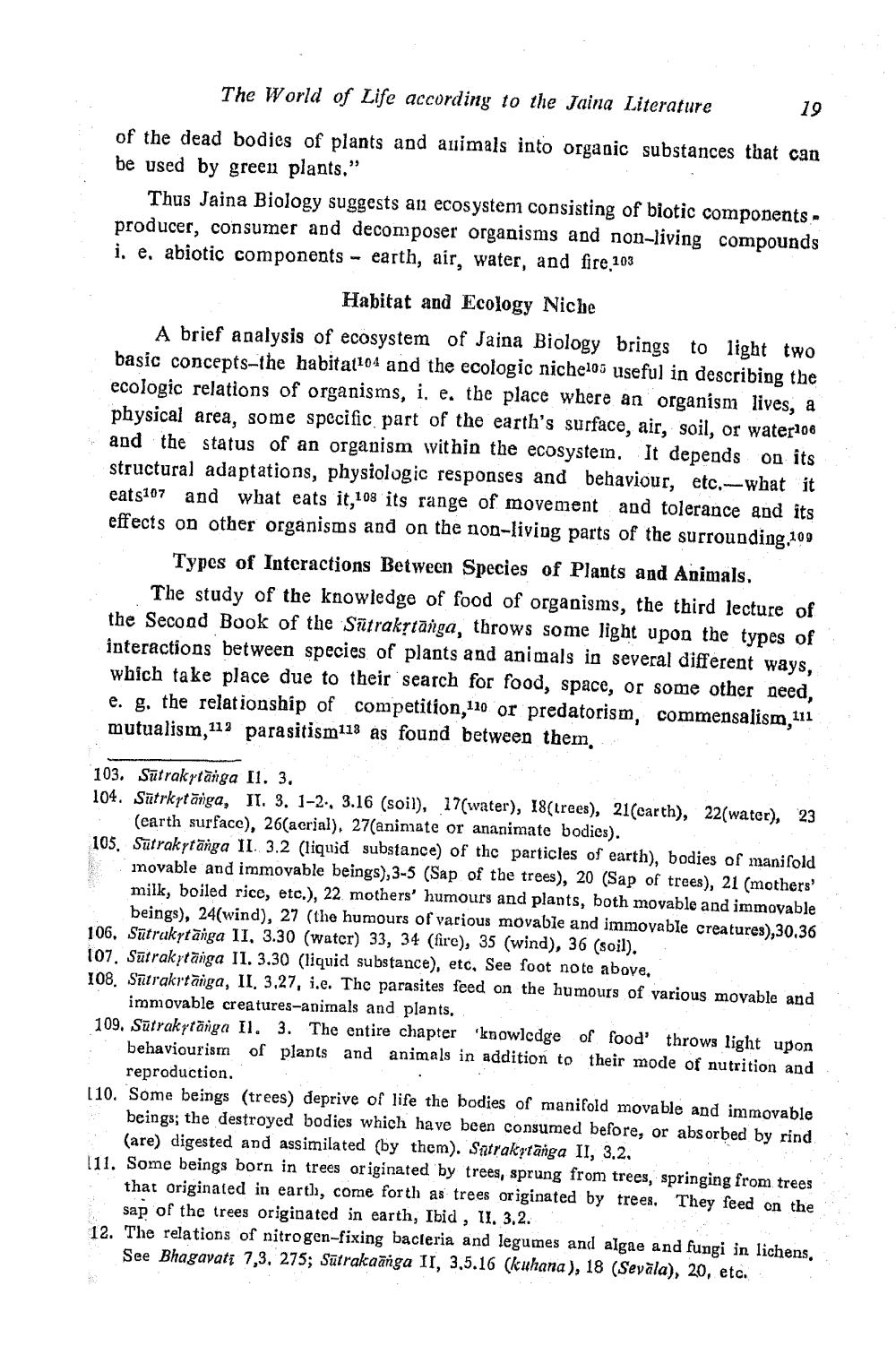________________
The World of Life according to the Jaina Literature
19
of the dead bodies of plants and animals into organic substances that can be used by green plants."
Thus Jaina Biology suggests an ecosystem consisting of biotic components - producer, consumer and decomposer organisms and non-living compounds i. e, abiotic components - earth, air, water, and fire 103
Habitat and Ecology Niche
A brief analysis of ecosystem of Jaina Biology brings to light two basic concepts-the habitat104 and the ecologic nichelos useful in describing the ecologic relations of organisms, i, e. the place where an organism lives, a physical area, some specific part of the earth's surface, air, soil, or water106 and the status of an organism within the ecosystein. It depends on its structural adaptations, physiologic responses and behaviour, etc.-what it eats107 and what eats it,108 its range of movement and tolerance and its effects on other organisms and on the non-living parts of the surrounding. 109
Types of Interactions Between Species of Plants and Animals.
The study of the knowledge of food of organisms, the third lecture of the Second Book of the Satrakstānga, throws some light upon the types of interactions between species of plants and animals in several different ways, which take place due to their search for food, space, or some other need, e. g. the relationship of competition,110 or predatorism, commensalism. 111 mutualism, 112 parasitism118 as found between them
103. Satrakrtānga 11. 3. 104. Sütrkytānga, II. 3. 1-2., 3.16 (soil), 17(water), 18(trees), 21(carth), 22(water), 23
(earth surface), 26(aerial), 27(aninate or ananimate bodies). 105. Sutrakytānga II 3.2 (liquid substance) of the particles of earth), bodies of manifold
movable and immovable beings), 3-5 (Sap of the trees), 20 (Sap of trees), 21 (mothers' milk, boiled rice, etc.), 22 mothers' humours and plants, both movable and immovable
beings), 24(wind), 27 (the humours of various movable and immovable creatures),30.36 106. Sūtrukytānga II, 3.30 (water) 33, 34 (fire), 35 (wind), 36 (soil). 107. Sūtrakytānga 11. 3.30 (liquid substance), etc. See foot note above, 108. Satrakrtānga, II, 3,27, i.e. The parasites feed on the humours of various movable and
immovable creatures-animals and plants, 109. Sutrakytänga Il. 3. The entire chapter 'knowledge of food' throws light upon
behaviourism of plants and animals in addition to their mode of nutrition and
reproduction. 110. Some beings (trees) deprive of life the bodies of manifold movable and immovable
beings; the destroyed bodies which have been consumed before, or absorbed by rind
(are) digested and assimilated by them). Satrakrtanga II, 3.2. 111. Some beings born in trees originated by trees, sprung from trees, springing from trees
that originated in earth, come forth as trees originated by trees. They feed on the
sap of the trees originated in earth, Ibid , II. 3.2. 12. The relations of nitrogen-fixing bacteria and legumes and algae and fungi in lichens.
See Bhagavatī 7,3, 275; Sūtrakaānga II, 3.5.16 (kuhana), 18 (Sevāla), 20, etc.




